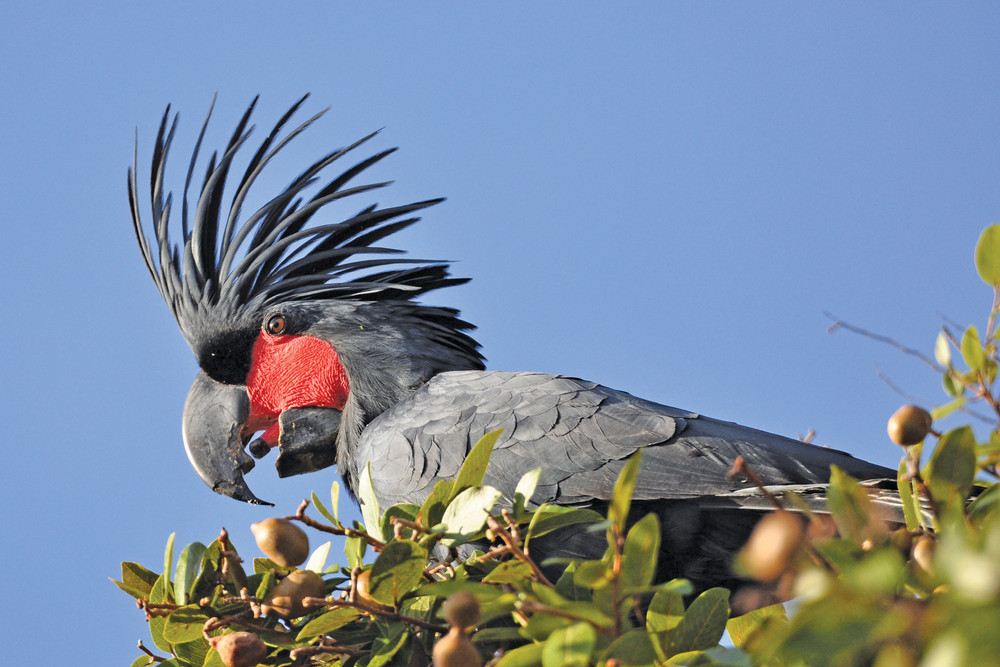Community & Business
14 August, 2022
The Palm Cockatoo, an extraordinary bird of Cape York Peninsula
AUSTRALIA is well known across the world as the land of parrots and we certainly have an amazing range of species to enjoy.

BY PETER VALENTINE
There are 14 species in the cockatoo family and another 43 species in the parrot family, ranging from that tiny gem of the inland, the Budgerigar, to our largest and most spectacular Palm Cockatoo, found only in the northern part of Cape York Peninsula.
On first viewing, the thing that stands out is its large size and enormous head and pointed bill. The black plumage culminates in a shaggy high crest rising well above the bare scarlet facial skin.
The bill is especially adapted to eat pandanas fruit but they also eat beach almonds, nonda plum, cocky apples and other foods including the seeds of stringy bark trees that cover much of the Peninsula.
In late 2021, the species was listed as Endangered due to concerns about the small population (around 2,000), slow rate of reproduction, habitat loss and the shortage of suitable nesting hollows.
There is a substantial population around Lockhart River and the Kutini-Payamu National Park (Iron Range) and these birds have been studied intensively in recent years to provide a much better understanding about their biology and ecology.
One of the most fascinating elements of this species is the ability of males to fashion a drum-stick and then produce a clear drumming sound by beating the stick on a hollow tree limb.
Using its large bill a male Palm Cockatoo will cut off a sizeable stick (up to 2.5 cm thick) and trim it to shape and size before using it as a drumstick, held in one foot while drumming on a large hollow tree trunk.
It is not entirely clear what the purpose is (possibly courtship or pair bonding activity) but the drumming activity was first published in 1984 following observations at Iron Range by Graham Wood, a resident of the Atherton Tablelands.
More recently the great variety of vocalisations of these birds, and the type and variety of drumming and courting behaviour has been studied by Dr Christina Zdenek over many years.
Their whistles and calls are astonishing and ring loudly through the habitat they occupy. It is believed that this species is the only non-human animal to make and use a musical instrument.
The combination of unique musical behaviour, courtship bowing and wing movements with its range of attractive whistles make this species extremely charismatic.
The Palm Cockatoo is a species that many birders are very keen to see and some travel from all over Australia in the hopes of a sighting, or a photograph.
Its colourful appearance and wonderful behaviour are very appealing to people and the species has recently been proposed to become the mascot for the Brisbane Olympic Games in 2032.
The potential fun and games from such a mascot is great and a decision to choose the “Palmy” might also raise awareness of its conservation status and lead to a brighter future for this species.
The Queensland Chief Scientist, Dr Hugh Possingham, is a keen advocate of the Palmy Mascot.
Peter Valentine is an adjunct Professor at James Cook University and he has spent much of the past 40 years studying wildlife in northern Queensland.


